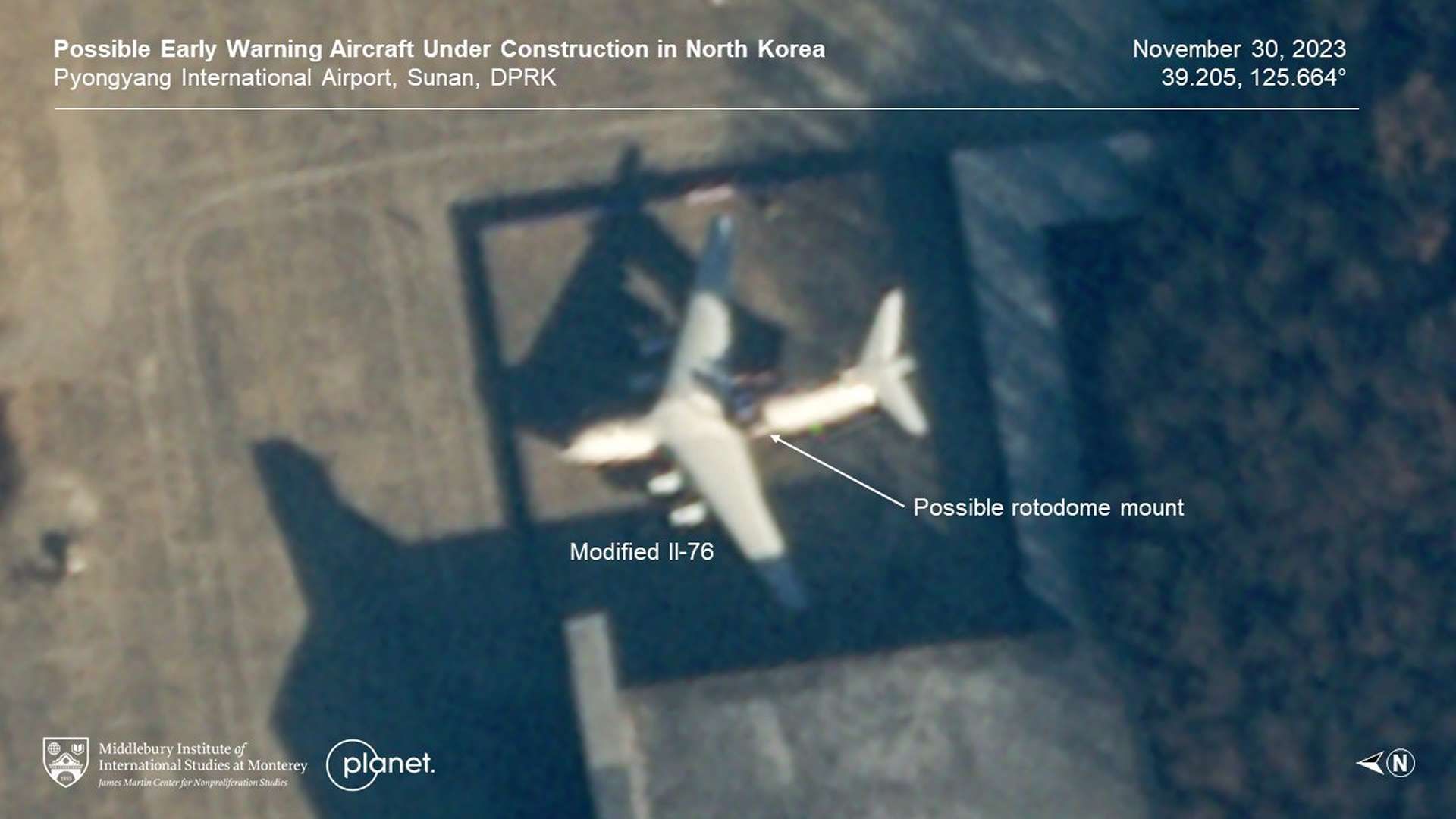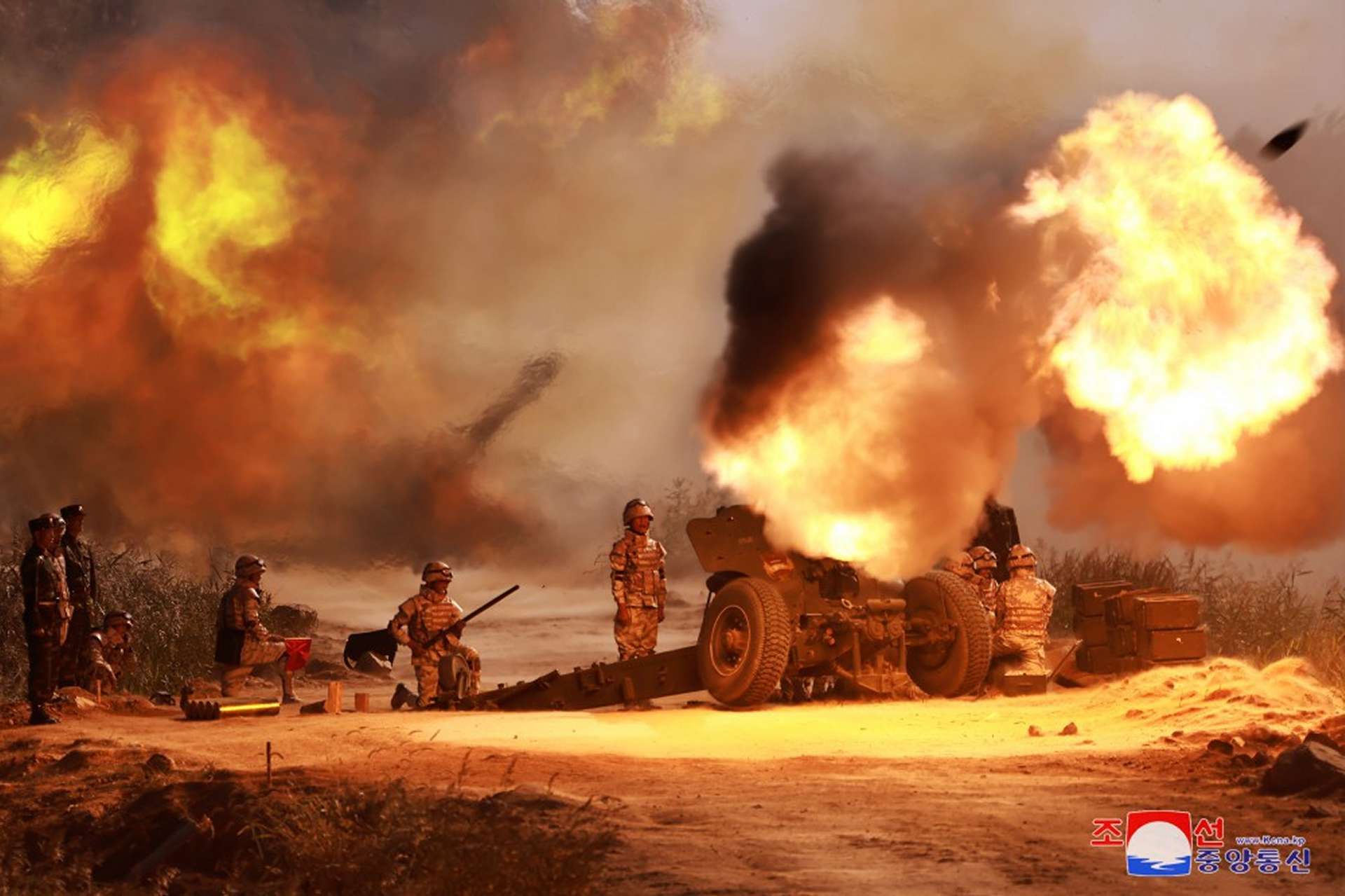Breaking News
South Korea considers supplying 155mm artillery shells to Ukraine as North Korea backs Russia.
As reported by KFN News, the official news channel of the South Korean Armed Forces, on October 21, 2024, reports have surfaced suggesting that North Korea is dispatching 1,500 elite special forces troops to Russia, prompting the South Korean government to contemplate supplying Ukraine with additional 155mm artillery shells through the United States. This potential increase in North Korean military support for Russia has raised concerns in Seoul, leading officials to consider stronger responses in coordination with international partners.
Follow Army Recognition on Google News at this link

"South Korea will respond with every possible means, alongside the international community, to any acts that threaten our core security interests," First Vice Foreign Minister Kim Hong-kyun stated during his meeting with the Russian ambassador. (Picture source: South Korean MoD)
According to KFN News, North Korea has sent the largest number of personnel overseas in its history, indicating a deepening alliance with Russia. The South Korean National Intelligence Service (NIS) confirmed that approximately 12,000 North Korean soldiers were sent to Russia's Far East earlier this month. Satellite images and other evidence provided by the NIS show Russian naval vessels near North Korean ports, allegedly transporting these troops. The soldiers are believed to be receiving training in Vladivostok and other locations to participate in the conflict in Ukraine.
In response, First Vice Foreign Minister Kim Hong-kyun summoned Russian Ambassador to South Korea Georgy Zinoviev to express Seoul's concerns. Kim demanded the immediate withdrawal of North Korean troops from Ukraine, describing the cooperation between Russia and North Korea as a serious threat to both South Korea and the international community. He emphasized that any military collaboration between Moscow and Pyongyang risks destabilizing the Korean Peninsula and violates several United Nations Security Council resolutions.
"South Korea will respond with every possible means, alongside the international community, to any acts that threaten our core security interests," Kim stated during his meeting with the ambassador. Zinoviev downplayed South Korea's concerns, stating that Russia's cooperation with North Korea is not directed against South Korea's security interests and is conducted within the framework of international law. He noted that Russia and South Korea hold opposing views on the causes of tensions on the Korean Peninsula.

Satellite imagery suggests that a North Korean IL-76 aircraft is currently undergoing modifications at Pyongyang International Airport, possibly to convert it into an Airborne Early Warning and Control (AEW&C) or Airborne Warning and Control System (AWACS) platform. (Picture source: Twitter/Decker Eveleth)
While the United States and its allies suspect that North Korea is receiving advanced military technology from Russia in return for its support, such as the potential conversion of a Russian IL-76 into an Airborne Early Warning and Control (AEW&C) or Airborne Warning and Control System (AWACS) platform, Washington has not confirmed the reports of troop deployment. U.S. officials have indicated that they are evaluating the situation and currently have no definitive evidence of North Korean soldiers being sent to Ukraine.
Amid these developments, the South Korean government is considering supplying Ukraine with additional 155mm artillery shells via the United States. Last year, South Korea provided 500,000 rounds of these shells to the U.S., which were then sent to Ukraine. A military source indicated that the quantity of 155mm shells Ukraine can secure will be crucial in determining the outcome of the war. The source also mentioned that additional indirect support could serve as a pressure tactic to discourage North Korea's troop dispatch.
Artillery battles continue along the frontlines of the Russia-Ukraine war, causing approximately 80 percent of casualties. Ukrainian officials state that maintaining their positions requires 75,000 artillery shells per month, while launching a major offensive would require more than double that amount. In contrast, Russia fires around 300,000 shells each month and can sustain this with monthly production of about 250,000 and imports from North Korea.

Ukrainian officials state that maintaining their positions requires 75,000 artillery shells per month, while launching a major offensive would require more than double that amount. (Picture source: Ukrainian MoD)
To date, the United States has committed more than 3 million artillery shells of different calibers to Ukraine. The US administration may need to revisit South Korean munitions stockpiles to support Ukraine in the face of dwindling supplies and legislative delays. South Korea has previously provided assistance; reports in April 2023 suggested that it agreed to lend 300,000 155mm artillery shells to the United States, likely with the understanding that this would allow the U.S. to send more ammunition to Ukraine.
South Korea's defense industry has expanded significantly since the late 1970s and has become a notable player in the global arms market. The country can produce large amounts of ammunition and has developed advanced weaponry such as the K2 Black Panther and the K9 Thunder, which are increasingly sought after by other nations, including NATO members. However, South Korea's Defense Procurement Act and Foreign Trade Act currently prohibit the transfer of arms and ammunition to Ukraine, either directly or through third parties.
Both laws would need to be amended for such deliveries to be possible. This situation represents another chapter in South Korea's internal debate on whether to support Ukraine militarily, a topic previously discussed in April 2022 and revisited in July 2023. Despite these considerations, the likelihood of an immediate policy shift remains unclear as Ukraine continues to await the delivery of K600 mine-clearing tanks, which South Korea had previously pledged.
A South Korean government official stated, "If Pyongyang continues to dispatch more forces, Seoul will have to take action as a responsible player in the international community," suggesting that the government is considering necessary measures to deter further troop deployments by North Korea. "We agreed with the international community to use every tool at our disposal to respond to the situation," the presidential office confirmed.

Each North Korean artillery piece is expected to have a 45-day firing capacity, potentially resulting in an estimated stockpile of 27 million 122mm and 152mm shells. (Picture source: KCNA)
The Washington Post reported that South Korea's indirect provision of 155mm artillery shells for Ukraine this year has made it a larger supplier of ammunition for the country than all European nations combined. While South Korean law prohibits providing weapons to war zones, U.S. officials sought to persuade Seoul to provide munitions indirectly. The shells began to flow at the beginning of the year, eventually making South Korea a significant supplier of artillery ammunition for Ukraine. It remains unclear whether these munitions were used to replenish U.S. stockpiles or were delivered directly for operations in Ukraine.
Analysts note that South Korea may face challenges in supplying additional 155mm shells without risking shortages in its own defense capabilities. Like Ukraine, South Korea faces a hostile neighbor and has limited munitions stockpiles and constrained production capacity. Some reports suggest that South Korea could face munitions shortages within a week of a conventional conflict with North Korea. Estimates put South Korea's annual production rate at around 200,000 155mm shells per year, while Ukraine's armed forces, of similar size, may fire that many projectiles in a month of heavy fighting.
On the other side, North Korea is reportedly capable of supplying Russia with a significant quantity of military equipment, including artillery shells and other assets. As reported in October 2023, the North Korean army possesses an arsenal of around 21,000 artillery pieces, focusing on larger calibers like 152mm and 122mm. Each artillery piece is expected to have a 45-day firing capacity, potentially resulting in an estimated stockpile of 27 million 122mm and 152mm shells. It is plausible that North Korea may supply Russia with up to 10 million of these shells. However, while some of the ammunition may be aged, it is comparable to the Soviet-era stockpile previously used by Russia.


























